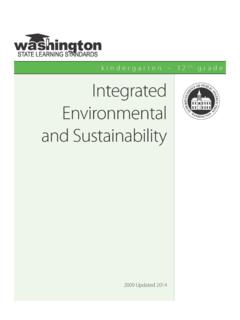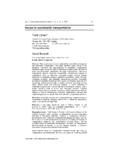Transcription of SUSTAINABILITY ASSESSMENT METHODOLOGIES
1 1 SUSTAINABILITY ASSESSMENT METHODOLOGIESC andice StevensOECD Sustainable Development Advisor2 What is the current landscape for impact assessments?QTypes SUSTAINABILITY , integrated , regulatory, environmental , economicQLevels local, national, regional, sectoral, internationalQTargets policies, programmes, projects, regulations, agreementsQTiming before (ex ante), during, after (ex post)3 What makes an impact ASSESSMENT sustainable ?QExamines LONG-TERM flows, investments and effectsQExamines economic, environmental and social impacts in equal measureQIdentifies synergies and trade-offs across domainsQRespects open and transparent processes4 What should be the relationship to other types of assessments?QIntegrate SUSTAINABILITY criteria into other ASSESSMENT approachesQConduct assessments separately and use SUSTAINABILITY assessments as integrating mechanism QMerge all approaches into overarching SUSTAINABILITY assessmentsQDevelop general methodology for impact assessments 5 What are the main steps for SUSTAINABILITY assessments?
2 QRelevance analysis-- is SUSTAINABILITY relevant?QScoping analysis what are the extent/depth, procedures and tools for the ASSESSMENT ?QImpact analysis-- what are the short-and long-term economic, environmental and social impacts?QComparative analysis what are the major synergies, conflicts and trade-offs?QAssociative analysis what measures can be put in place to mitigate harmful impacts? QPolitical analysis which path is the least-cost (economic, environmental and social) option? 6 What are the main SUSTAINABILITY ASSESSMENT tools? QEconomic cost/benefit analysis, modelling, regressions, scenariosQEnvironmental life-cycle analysis, material flows, resource accounting, NAMEA, ecological footprintQSocial sustainable livelihoods, human and social capital measurement, participatory processes7 How can synergies and trade-offs be identified?QComparative value analysis impacts are scored according to pre-set valuesQUtility analysis impacts are rated on a uniform scale and weightedQCost-benefit analysis positive and negative impacts are assigned monetary values and comparedQMulti-criteria analysis both quantitative and qualitative impacts are ranked on pre-set criteriaQRisk ASSESSMENT degrees of risk reduction identified with pre-set risk thresholds8 How can long-term and intergenerational concerns be identified?
3 QCapital indicators assess stocks and flows of economic, environmental , human and social capital according to discount ratesQTrend lines identify positive, negative or constantQIrreversibility determine degree to which effects can be reversedQBurden-shifting determine degree to which negative impacts are shifted to future generationsQCost of inaction estimate long-term costs of failure to act at present9 What are the important procedural aspects of SUSTAINABILITY assessments?QWhich agency should carry out the ASSESSMENT and which other agencies should be involved?QHow and at which stages should stakeholders/civil society be involved and consulted?QHow and to whom should the ASSESSMENT results be communicated?QWhat is the legal and political status of the ASSESSMENT recommendations?QTo what extent should SUSTAINABILITY assessments be mandated and embedded in existing procedures?10 What are the main difficulties with SUSTAINABILITY assessments?
4 QGiving equal attention to the three spheres and adequate attention to the longer-termQAssigning monetary values to environmental and social assets for comparisonsQIdentifying trade-offs presenting positive vs. negative assessments in the three spheres on a comparable basisQReconciling conflicts between economic, environmental and social goals and providing the basis for political decisions11Is it possible to recommend general steps for SUSTAINABILITY assessments?QIdentify level and target ( national policy, local project)QEstablish SUSTAINABILITY relevanceQSelect quick scan vs. more detailed assessmentQIdentify relevant tools (qualitative, quantitative)QAssess impacts, synergies and conflictsQIdentify alternative policy paths from least to most sustainableQPresent findings to policy-makers and stakeholders















